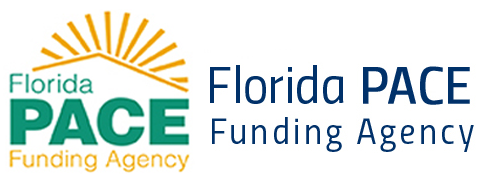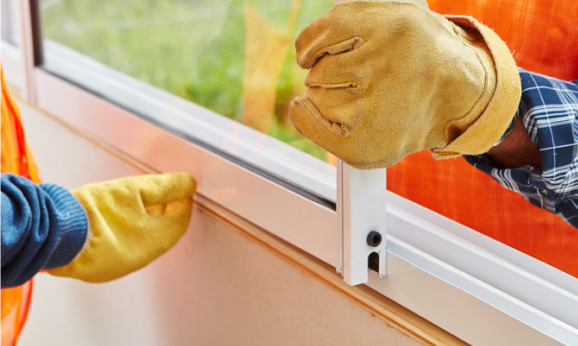
The 8 Best Ways to Pay for Home Improvements
Whether you’re looking to enhance your living space or prepare your property for sale, planning for home improvements often leads to one crucial question: how will you finance it?
This question becomes even more pressing in today’s economic landscape, marked by soaring inflation rates. According to a Bankrate survey, over half of Americans postpone significant financial decisions, including 25% holding back on home improvement projects due to the current economic climate.
At Florida PACE, we recognize the importance of making informed financial decisions, especially when renovating your home. As a trusted source in home improvement financing, we aim to guide you through the funding options available, from lines of credit to exploring government-backed rehab loans.
Make Smart Home Choices for Home Improvements
Understanding the specific nature of your home improvement project is crucial in selecting the right funding option. Whether it’s a critical repair or a desired upgrade, the financing choice should align with the project’s urgency and scale.
Types of Home Projects and Funding Considerations
Essential Repairs: Addressing urgent needs like a leaky roof or a malfunctioning heater is paramount. If your savings aren’t enough, exploring borrowing options becomes necessary. Financial expert Taylor Kovar advises setting aside a portion of your home’s value annually for such repairs. For a $500,000 home, earmark around $5,000 to $20,000 for unexpected fixes. This ensures that essential repairs are not sidelined due to financial constraints.
Desirable Upgrades: These enhancements are about adding value or modern touches to your home. They’re not immediate necessities, allowing you the time to save and plan. If you’re considering upgrades to boost your home’s market value, borrowing might be an option. However, assessing the return on investment is crucial, as not all upgrades offer equal resale value. For example, installing a new garage door might be profitable, while an extensive kitchen remodel may not fully recoup the investment.
When deciding how to finance your home improvements, it’s essential to consider the nature of the project. This understanding will guide you in choosing various financing options, including the specialized solutions offered by programs like Florida PACE. Tailoring your funding choice to your home improvement project’s specific demands and benefits ensures financial caution and project success.
1. Paying With Savings
| Pros | Cons |
| No repayment or interest charges | Requires substantial upfront cash |
| Complete control over the project budget | It might deplete emergency or other savings |
Using savings for home improvements is ideal for those with readily available funds. It’s straightforward and lacks financial liabilities from other funding methods, like interest charges or monthly payments. By paying in cash from savings, homeowners can avoid incurring additional debt and the complexities that come with loans or credit options.
Paying directly with savings might get you a discount from contractors, who usually pay fees for credit card payments. It needs a lot of money upfront, but this way, you won’t owe anything later, giving you financial peace and freedom for your home projects.
2. Home Improvement Loans
| Pros | Cons |
| Quick funding not secured against your home | Requires substantial upfront cash |
| Fixed repayment terms | It might deplete emergency or other savings. |
Ideal for medium-sized projects, these loans are an excellent option for homeowners who want to avoid using their home as collateral. These unsecured loans offer flexibility and quick access to funds, making them a favorable choice for those with good credit histories.
They usually have higher interest rates than secured loans. If you’re looking to undertake a substantial home upgrade without the risk of leveraging your home, this could be your best route, particularly if you have a strong credit score and stable income.
3. Home Equity Line of Credit (HELOC)
| Pros | Cons |
| Lower interest rates | Your home is collateral |
| Flexible borrowing up to a set limit | Variable rates can increase |
HELOCs are perfect for homeowners with considerable equity in their property. This option provides the flexibility to borrow as needed over time, akin to a credit card, but with your home equity as security. It’s beneficial for large-scale renovations where expenses might be spread out. HELOCs often come with lower interest rates and potential tax benefits.
However, managing this line of credit wisely is essential, as your home is at stake in case of payment defaults. A HELOC can be a smart financial choice for those with enough home equity seeking flexible funding for significant home upgrades.
4. Home Equity Loan
| Pros | Cons |
| Fixed interest rates & more extended repayment periods | Puts your home at risk |
| Larger loan amounts | Requires sufficient home equity |
This option is perfect for homeowners who need a substantial, one-time amount and prefer predictable, fixed monthly payments. It allows you to borrow against your home’s equity, providing a lump sum that can be used for major home improvement projects.
The key advantage is the stability it offers in terms of repayment. However, having enough equity in your home to qualify is important. This method is a reliable way to finance significant renovations, offering a straightforward approach to funding more extensive home upgrades.
5. Cash-Out Refinance
| Pros | Cons |
| Potentially lower overall mortgage interest rates | Extends mortgage duration |
| Can substantially increase available funds. | Requires good credit. |
It is an excellent option for homeowners with significant equity and good credit. This method involves refinancing your existing mortgage for more than you currently owe and then receiving the difference in cash. It’s a practical choice if you need a considerable sum for major home renovations.
By refinancing, you can access the needed funds while potentially securing a better interest rate. However, it’s essential to consider the long-term implications, as this option increases your mortgage amount and could extend the loan term. It is ideal for those planning substantial home improvements and looking to tap into their home’s equity for funding.
6. Credit Cards
| Pros | Cons |
| Can substantially increase available funds. | Requires good credit. |
This option is particularly effective for short-term projects, especially if you can benefit from a promotional APR (Annual Percentage Rate). Credit cards offer the convenience of instant access to funds and are ideal for handling minor renovations or urgent repairs.
However, it’s crucial to manage this method carefully. Paying off the balance quickly is vital to avoid accruing high-interest rates. For those who can diligently manage their repayments, credit cards can be a practical way to fund more minor home improvements without the complexities of loan processes.
7. Government Loans
| Pros | Cons |
| Lower borrowing costs | Strict eligibility criteria |
| Specific loans like HUD Title I Property Improvement Loan | Limited to certain types of improvements |
It is ideal for targeted home upgrades like energy efficiency improvements and is suitable for veterans and those meeting certain criteria. The U.S. Department of Housing and Urban Development (HUD) provides a Title I Property Improvement Loan. This loan is designed to assist homeowners with renovations at minimal costs, provided they meet certain eligibility criteria.
If you want to make specialized home improvements, especially those that align with government incentive programs, these loans can effectively finance your project. They are particularly beneficial for qualifying individuals who seek to enhance their homes while adhering to set standards, such as energy-saving renovations.
8. Florida PACE Funding
| Pros | Cons |
| Fixed interest rates for predictable payments | Potential challenges in selling or refinancing if not fully paid |
| No minimum credit score is required | Risk of tax lien for unpaid PACE assessments |
| Repayment integrated with property taxes | May not suit all types of home improvement projects |
| Immediate pre-approval available | |
| No down payment or early repayment fees |
Florida PACE Funding is an innovative and targeted financing option, ideal for homeowners focused on essential home improvements. This program is particularly well-suited for projects that enhance energy efficiency and safety, such as installing energy-efficient HVAC systems, robust roofing, or comprehensive hurricane protection.
Unique in its approach, Florida PACE integrates the repayment process with property taxes, providing a hassle-free financial solution. It’s tailored for upgrades that improve your home’s resilience, contribute to energy savings and protect against extreme weather events.
What sets Florida PACE apart is its commitment to helping homeowners achieve a safer and more sustainable living environment. The program supports various projects to upgrade to energy-saving windows, reinforce home defenses against storms and add roofs. Significantly, the program’s eligibility criteria do not solely rely on credit scores, making it accessible to a broader range of homeowners.
Ready to Fund Your Home Improvements With Confidence?
Choosing a method that aligns with your specific needs and circumstances is essential. Each option offers unique advantages, from utilizing savings for immediate, debt-free renovations to exploring home equity loans for significant projects and leveraging credit cards for smaller upgrades.
Whether you’re planning essential repairs or energy-saving upgrades, Florida PACE offers a reliable path forward — no credit score required, no upfront payment and fixed terms added to your property taxes. It’s a flexible, transparent option designed to help you improve your home without putting your personal finances at risk.
If you’re ready to take the next step, apply today and see if your project qualifies for Florida PACE funding.



